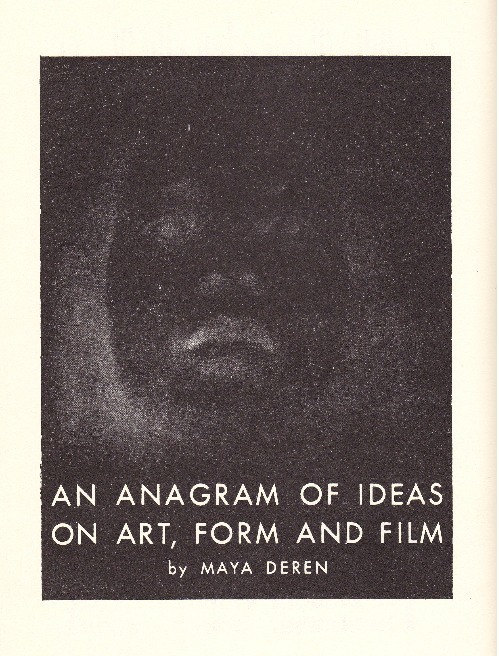Kinema Ikon catalogue (2005) [English/Romanian]
Filed under catalogue | Tags: · art, digital art, experimental film, film, hypermedia, media art, romania, video art

Kinema Ikon is the oldest active experimental art group in Romania. Founded in 1970 as a multimedia atelier at the art school in Arad it is currently hosted by the Arad’s History Museum and Art Museum. Coming from the various fields (art, literature, architecture, photography, music, programming), its members created in over four decades an astonishing variety of works ranging from experimental film, video art, through hypermedia to interactive installations.
The catalogue accompanied the Kinema Ikon retrospective exhibition held at the MNAC, Bucharest in October-December 2005, curated by Raluca Velisar and Stefan Tiron. The first volume covers the experimental films and videos produced by the group, the second volume features hypermedia works, and the third volume is dedicated to Intermedia magazine published since 1994.
Editor Kinema Ikon
Concept and design by Calin Man
Publisher MNAC – The National Museum of Contemporary Art, Bucharest; Museum Arad; Centrul Cultural Judetean Arad
102 / 104 / 48 pages
authors
Kinema Ikon on the Monoskop wiki
PDF (Volume 1)
PDF (Volume 2)
PDF (Volume 3)
View online (Issuu.com, Volume 1)
View online (Issuu.com, Volume 2)
View online (Issuu.com, Volume 3)
Jump Cut: A Review of Contemporary Media, No. 1-54 (1974-2011)
Filed under journal | Tags: · cinema, experimental film, feminism, film, film criticism, film theory, left, media criticism, media theory, new media, politics, video
JUMP CUT: A REVIEW OF CONTEMPORARY MEDIA is run on a nonprofit basis by its staff and is not affiliated with or supported by any institution. Begun in 1974 as a film publication, JUMP CUT now publishes material on film, television, video, new media, and related media and cultural analysis. As a print publication till 2001, JUMP CUT circulated 4000 copies per issue in North America and internationally to a wide range of readers including students, academics, media professionals, political activists, radicals interested in culture, film and video makers, and others interested in the radical analysis of mass culture and opposition media. Now, with free online access, the readership is much larger and more international.
Editors: John Hess, Chuck Kleinhans, Julia Lesage
Licensed under a Creative Commons Attribution-NonCommercial-NoDerivs 2.5 License.
View online (Current issue; HTML articles)
View online (Back issues; HTML articles)
Maya Deren: An Anagram of Ideas on Art, Form and Film (1946)
Filed under pamphlet | Tags: · art, experimental film, film, film theory

“Maya Deren’s four 16 mm. films have already won considerable acclaim. Convinced that there was poetry in the camera, she defied all commercial production conventions and started to make films with only ordinary amateur equipment. Her first, MESHES OF THE AFTERNOON (1943), was made with her husband Alexander Hammid, whose films–FORGOTTEN VILLAGE, CRISIS, HYMN OF THE NATIONS (Toscannini) and others–reveal also that devotion to the poetry of vision which formed the common ground of their collaboration. When other work claimed his time, Maya Deren went on by herself–conceiving, producing, directing, acting, (being unable to afford actors) photographing (when she was not in the scene) and cutting. Through all the trials of such shoe-string production, which included carrying equipment for miles to the location, she had only assistance of another woman, Hella Heyman, as camerawoman. Yet three more films were made: AT LAND, A STUDY IN CHOREOGRAPHY FOR CAMERA (with Talley Beatty) and RITUAL IN TRANSFIGURED TIME, thus proving that fine films could be made “for the price of the lipstick in a single Hollywood production.” Her heroic persistence has just been rewarded by a John Simon Guggenheim Memorial Foundation Fellowship. Moreover, the reputation of the films has spread so that performance at the Provincetown Playhouse were completely sold out and they have also been shown in colleges and museums throughout the country.
In this pamphlet Maya Deren’s approach to film reflects not the limited scope of a professional craftsman, but a broad cultural background–a profound interest not only in esthetics generally and in psychological insight, but in physics and the sciences as well. Russian-born, daughter of a psychiatrist, Maya Deren attended Syracuse University, when she first became interested in film, and received her B.A. from New York University and her M.A. from Smith College, both degrees in literature.” (Publisher’s Note)
Publisher Alicat Book Shop Press, Yonkers, New York, 1946
Issue 9 of “Outcast” series of chapbooks
52 pages
via meghedii
Experimental film at Monoskop wiki
Google books
PDF (no OCR; updated on 2012-7-14)
Comment (0)
